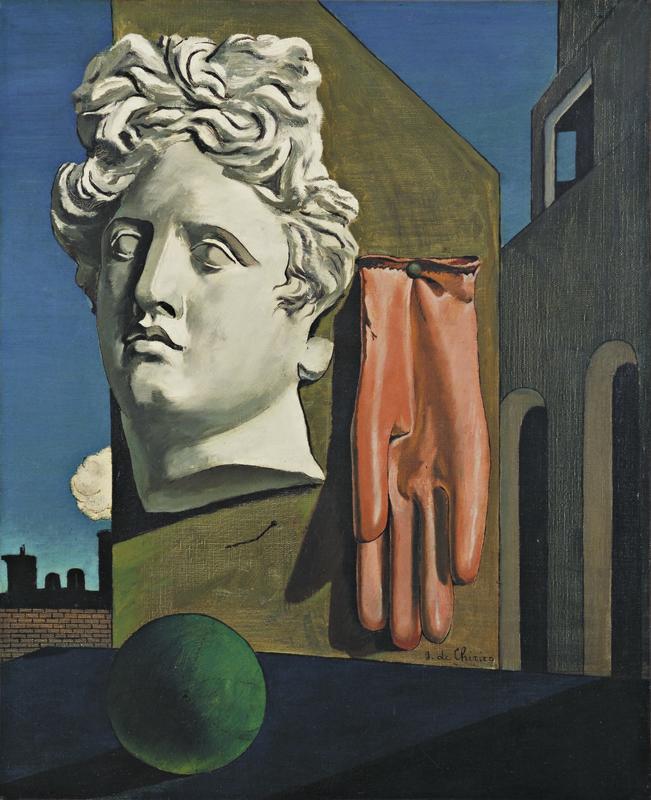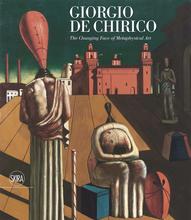More about The Song of Love
- All
- Info
- Shop

Contributor
What do a Classical Greek bust, a massive rubber glove, a train, and a bouncy ball all have in common? The ability to make you very confused when they are all put on the same canvas.
I mean, really. What kind of bizzaro still life is this? The answer is that it’s not a still life. It’s the precursor to all of Surrealism. And Andre Breton thought he was original… “By subverting the logical presence of objects, de Chirico created what he termed "metaphysical" paintings, representations of what lies "beyond the physical" world.” If you didn’t already guess, de Chirico was a trippy guy. And the fact that he lived through two world wars only made him trippier as evident in the man’s art. The strange assortment of objects in this painting, when put together, give off a creepy vibe – a vibe similar to that of Europe as World War I tore it apart.
Though eerie, many parts of this work were allusions to de Chirico’s actual experiences. “The train alludes to his childhood, and the arcades to the architecture of Italian towns. The glove… anticipates the pointing 'hand of fate' found in the artist's later so-called 'alchemical' works.” What we don’t know is what part of the work the title points to. Unless you have synesthesia and can hear a song when you look at this painting, it’s impossible to know what de Chirico meant. On the off chance that you do have synesthesia and are reading this, please comment an answer below.
Sources
- "Giorgio De Chirico Biography, Art, And Analysis Of Works." The Art Story. Web. 17 Jan. 2018.
- "Giorgio De Chirico. The Song Of Love. Paris, June-July 1914 | Moma." The Museum of Modern Art. Web. 16 Jan. 2018.
- "Song Of Love, Giorgio De Chirico: Analysis." Visual-arts-cork.com. Web. 16 Jan. 2018.
Featured Content
Here is what Wikipedia says about The Song of Love
The Song of Love (also known as Le chant d'amour or Love Song) is a 1914 painting by Italian metaphysical painter Giorgio de Chirico. It is one of the most famous works by Chirico and an early example of his pre-surrealist style, though it was painted ten years before the movement was "founded" by André Breton in 1924.
It depicts an outdoor architectural setting similar to other works by Chirico at this time. This time however, the main focus is a small wall on which is mounted a Greek sculpted head and a surgeon's glove. Below it is a green ball. On the horizon is the outline of a locomotive, an image that recurs several times during this period of Chirico's career and that has been interpreted as a symbol of de Chirico’s father, an engineer who was involved in the planning of railroad lines in Greece.
Check out the full Wikipedia article about The Song of Love













